Product Resources
Product resources
HPLC-chip MS
Agilent's HPLC-chip MS system is designed for automation of phosphopeptide analysis workflow to improve the study of cellular phosphorylation events. The system comprises a reusable nanoflow-rate chip that contains an enrichment section with titanium dioxide beads and C18 reversed-phase material. The chip can be used with the company's MS instrumentation using an HPLC-chip cube interface. Agilent Technologies, Santa Clara, CA; www.agilent.com
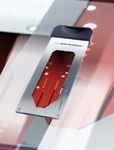
MS ion source
The 2-D Omni Spray ion source from Prosolia is based on desorption electrospray ionization and is designed for surface analysis with rapid sampling and high throughput. The ion source's software enables control through a graphical user interface. The ion source reportedly holds up to three Omni Slides or one Omni Slide-96. According to the company, the source is compatible with Thermo and Sciex mass spectrometers. Prosolia, Indianapolis, IN; www.prosolia.com
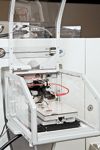
LC–MS toxicology screening system
Thermo Fisher Scientific's ToxSpec Analyzer comprises an integrated system of hardware, software, and methodologies and is designed for LC–MS toxicology screening. The system includes an SPE sample preparation method, an LC–MS data acquisition method, and a compound library. The system's software reportedly requires only an initial configuration and can generate summary and data review reports in various formats. Thermo Fisher Scientific, Waltham, MA; www.thermo.com

Portable GC–MS system
Torion's GUARDION-7 GC–MS system is designed for lightweight, field-portable operation. The system combines a high-speed gas chromatograph with a miniaturized toroidal ion-trap mass spectrometer. According to the company, the system weighs less than 30 lb and is the size of a briefcase. The system operates on battery power and has an on-board helium carrier gas cartridge. The system reportedly is supported with the company's operating software and its SPME syringes for sample introduction. Torion Technologies, Inc., American Fork, UT; www.torion.com
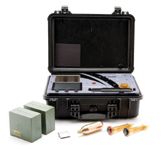
MS system
The Xevo QTof MS system from Waters is designed for traditional LC–MS-MS applications. According to the company, the system is intended for use as a high-performance, exact-mass benchtop MS-MS system in areas such as food and beverage, environmental, medical, and molecular biology analyses. Waters Corp., Milford, MA; www.waters.com/xevo
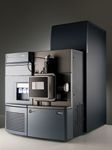
MS systems
Waters' SYNAPT MS systems are designed for life science research, biopharmaceutical development, and classic drug discovery. According to the company, the systems comprise quadrupole oa-Tof platforms with UHPLC, API/MALDI, exact mass, and informatics components. Waters Corp., Milford, MA; www.waters.com

MS system
The micrOTOF API-TOF MS system from Bruker Daltonics is designed to provide a resolution of greater than 16,500 and a mass accuracy of 1–2 ppm. According to the company, the system can be equipped with a GC–atmospheric pressure chemical ionization interface to allow GC–TOF-MS analysis on the same instrument. The combination reportedly allows interchange between LC and GC operation in a few minutes without tools. Bruker Daltonics, Billerica, MA; www.bdal.com

Custom standards
Custom inorganic standards from Inorganic Ventures can be used in applications such as ICP, ICP-MS, atomic absorption, and ion chromatography. Each standard is supplied with a certificate of analysis that details NIST traceability, certified values, and trace impurities. The standards reportedly are manufactured in a "green" manufacturing facility. Inorganic Ventures, Lakewood, NJ; www.inorganicventures.com
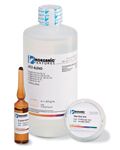
LC–MS-MS software
Applied Biosystems' Cliquid Software 2.0 is designed to simplify routine food and environmental testing, forensic toxicology, and clinical research testing with LC–MS-MS. The software features a four-step workflow, automated reporting according to regulatory requirements, automated library searching for screening and confirmation, an MRM catalog for new method creation, and a pack–unpack function to download preconfigured iMethod tests. Applied Biosystems, Foster City, CA; www.info.appliedbiosystems.com/iMethod
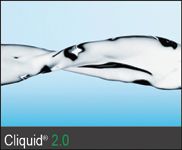
TOF detector
The UltraFast BiPolar TOF detector from PHOTONIS reportedly exhibits a temporal resolution of 750 ps. According to the company, field tests show a near twofold increase in mass resolution. The company offers 18 models ranging from 8 mm to 40 mm in diameter. PHOTONIS USA, Inc., Sturbridge, MA; www.photonis.com
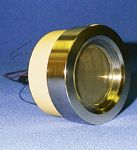
Supported liquid extraction plates
ISOLUTE SLE+ supported liquid extraction plates from Biotage are designed to be an alternative to traditional liquid–liquid extraction for bioanalytical sample preparation. According to the company, the plates provide high analyte recoveries, eliminate emulsion formation, and cut sample preparation time in half. The plates are available in 200- and 400-mg formats for total aqueous sample loads of as much as 200 µL and 200–400 µL, respectively. Biotage, Charlottesville, VA; www.biotage.com
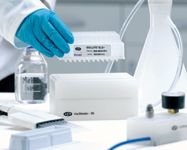

Best of the Week: AI and IoT for Pollution Monitoring, High Speed Laser MS
April 25th 2025Top articles published this week include a preview of our upcoming content series for National Space Day, a news story about air quality monitoring, and an announcement from Metrohm about their new Midwest office.
LIBS Illuminates the Hidden Health Risks of Indoor Welding and Soldering
April 23rd 2025A new dual-spectroscopy approach reveals real-time pollution threats in indoor workspaces. Chinese researchers have pioneered the use of laser-induced breakdown spectroscopy (LIBS) and aerosol mass spectrometry to uncover and monitor harmful heavy metal and dust emissions from soldering and welding in real-time. These complementary tools offer a fast, accurate means to evaluate air quality threats in industrial and indoor environments—where people spend most of their time.